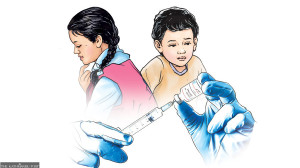Editorial
Bad omen
Timely preparation is a must to prevent a repeat of the yearly water-induced disasters.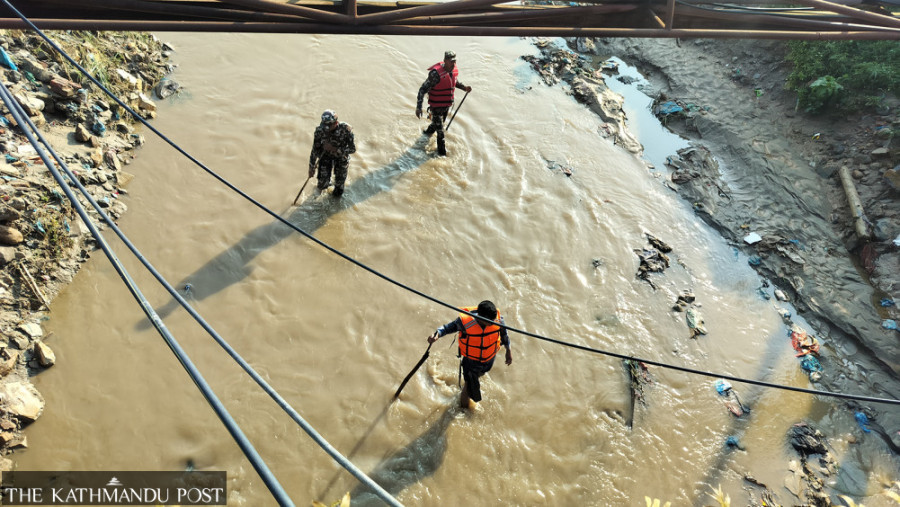
Heavy and days-long rainfalls wreaking havoc, leaving hundreds of people dead and causing huge property losses is a recurrent phenomenon in Nepal every monsoon. This year, due to lackluster preparations, these destructions could visit us sooner. Nature has started unfolding its fury a month before the monsoon, which generally runs from the second week of June (to the third week of September). A swollen stream in Kavre swept away a woman on Tuesday. People in Kavre and surrounding areas that were badly hit by landslides and floods triggered by heavy rains in September last year are facing hardships this year too. Displaced people have languished in tarps for a year in the district. Separately, construction work to widen and upgrade some major highways has gathered momentum in the past couple of months. But work on key highways such as Naubishe-Muglin and Narayanghat-Butwal roads are unlikely to be completed before the monsoon. And incomplete construction could create chaos on the busy, grubby highways.
Travelling on the Narayanghat-Butwal road has been an ordeal-filled affair in the past few months. The police and local authorities have prevented vehicular movement on the road at least three times just in the past month. Traffic was halted in the Nawalparasi section of the road after a bridge at Chormara near Kawasoti collapsed on Monday evening. It was resumed on Tuesday via a diversion at the place. Vehicular movement was prohibited through the Daunne section earlier this month for a day. Drivers found the under-construction area impassable due to it being full of dust. But a light rain on May 6 suddenly turned the same road section into a muddy one prompting the local authorities to issue a notice banning traffic. A month ago, traffic was halted on the same route after flood damaged the diversion built at Dumkibas. These are just representative cases of authorities halting traffic on the key highway because of light rain.
When it comes to disasters, the situation has drastically changed over the past few years. Until some time ago, it was the hilly and mountainous districts that used to be badly impacted by landslides while the southern parts got badly flooded. But with major cities being highly concretised and also because of changing rain patterns, even urban areas have become highly vulnerable to damage from rains. Not only rivers and rivulets but also roads and streets in towns including in the capital city Kathmandu are suddenly flooded. Most dangerously, children going to schools have been trapped and swept away in flooded roads in Kathmandu.
While the fast changing weather patterns have created one after another challenge, our authorities wake up only after a disaster results in huge losses. On the other hand, security forces and other agencies that work in rescue are ill-equipped. The shocking incidents of Nakkhu Khola and Jhyaplekhola last year speak a lot. Four people were swept away from Nakkhu Khola, Lalitpur by Bagmati river last year as the authorities couldn’t rescue them even as they pleaded for help from the roof of a hut.
That was a textbook case of how ill-prepared our authorities are when it comes to tackling disaster events. Over 35 people were killed at Jhyaplekhola in Dhading due to local authorities’ failure to enforce a notice barring vehicular movement along the highway. There is more trouble ahead. The department of hydrology and meteorology has forecast above average rains during this monsoon. Timely preparation is a must to prevent a repeat of the yearly water-induced disasters.




 10.12°C Kathmandu
10.12°C Kathmandu



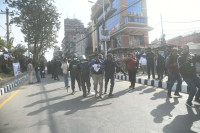

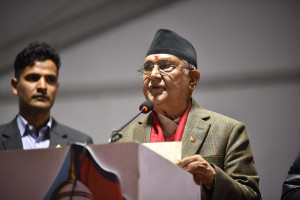
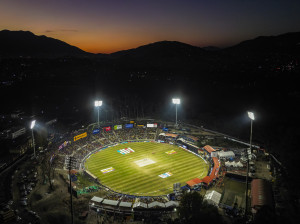
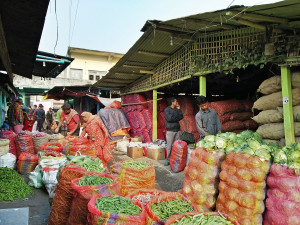
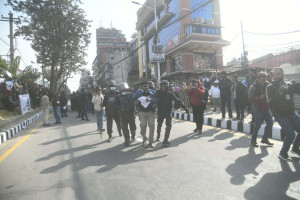



%20(1).jpg&w=300&height=200)

